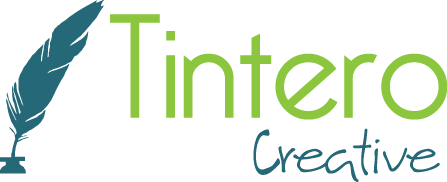A Simple Way To Plan Your Website Copywriting
Imagine if your website was so clear that your ideal customer took action the way you want them to! Imagine if creating your website had perfect flow and didn’t take months upon months. Yes, these things can happen, but only if you map our your website in a strategic way. Whether you hire someone or you write the bulk of your website content yourself, you will want to think through WHAT you’re going to say.
When you go to build a website or redesign a website, the professionals you hire to build out the structure or the content are going to ask you to provide them with the basics of your message. This is usually where business professionals get hung up. They know they need a website. They know what they ultimate need customers or clients to do. But, they don’t know what to say and how to say it. That’s why you hire the professionals, right?
Wrong!
You hire a professional to help you execute and be strategic, but if you can’t articulate the basics of your message, then you will never succeed with a prospective customer. When you hire someone to help you complete a project like this, you are looking for their technical knowledge and experience, as well as their strategic perspective as well. However, YOU are the expert at your story. YOU are the expert at your message and the technical aspects to what YOU do. So, YOU need to be able to communicate that effectively.
The 5 Paragraph Essay Approach
Here’s how I like to think about my websites and the content that go on them: I think back to when I first learned how to write a five paragraph essay in fifth grade. I distinctly remember the heat that blew off of the overhead projector as Ms. Tierney explained the process of outlining an essay. Here are a few of the core pieces:
Introduction. The introduction is where you hook people in with an interesting statement or question, explain that topic a little and then wrap up with a summary or thesis of what your essay will be about. Your website is very similar. Your home page needs to be interesting and hook people in, all while explaining a few basics so that people have some context, and then make it clear where you’re going with the point of your website. What are the big main topics people will want to pay attention to. The difference is that instead of these main topics being paragraphs, they are main pages on your site and the public sees these by looking at your main menu.
Main Talking Points/Paragraphs. Each outline has a few main talking points, usually starting with roman numeral II and going on from there. However, under each main roman numeral, you might have sub-topics which you might list out in A, B, C, etc. You do the same on a website. Let’s say your run a chiropractor office. Your main menu might have “about us,” “services,” “our team,” and “book an appointment.” These are your main talking points and will be main words on your menu across the top of your website. However underneath each of these, there may be other individual pages. You might have “chiropractic adjustment,” “physical therapy,” and “massage” listed as sub pages underneath the “services” page. Each of these pages will require written copy, images, calls to action and ultimately strategy, but they all are similar to each other in that they are types of services.
Conclusion. A good website will provide a conclusion paragraph that restates the thesis and ties all the information together. I like to think of the contact us page as a conclusion paragraph. This is where you can connect all the dots and provide people something to do with all the information you just gave. Sometimes a call to action can show up in a pop up window, a widget on a sidebar or footer, or something else. Think through where this makes sense or list out your ideas. A good web designer can help you consider what will work best for your business.
When you can outline your talking points in an outline format, similar to the ones we used to write five paragraph essays back in grade school, you can map out the skeleton of your website. This skeleton is extremely effective in communicating to your team how the site needs to be constructed. They can get in your head a little to understand how you see the information and how it needs to be presented. It provides a starting point to provide other recommendations or to take the project to the next level!
Building or re-doing a website? Grab our free Website Launch Guide here FREE!
Grab Our Website Launch Guide FREE
Avoid headaches, wasted time, and frustration and instead build a killer website that works FOR YOU!
